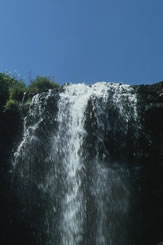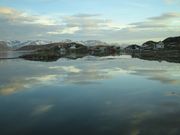 World Bank says Red-Dead project feasible
World Bank says Red-Dead project feasible
The Red Sea-Dead Sea Water Conveyance Project is feasible, according to a World Bank study, but it will have manageable social and environmental effects.
The World Bank has posted the draft executive summaries of the economic feasibility study, the environmental and social impact assessment and the study of alternatives on its website in Arabic, English and Hebrew.
The Red-Dead project is part of international efforts to save the Dead Sea, which has been shrinking at the rate of one metre per year, largely due to the diversion of water from the Jordan River for agricultural and industrial use.
Initial plans for the Red-Dead project, which includes Jordan, Palestine and Israel, propose pumping one billion cubic metres of water annually from the Red Sea into the rapidly shrinking Dead Sea to stop its depletion.
Results of the studies, launched in 2008, indicated that six potential Red-Dead project configurations have been considered based on three alternative conveyance systems, including a tunnel alignment option, a tunnel/canal alignment option and a pipeline alignment option.
While the tunnel option has advantages of operational energy saving and low environmental impact, it has a number of “serious drawbacks”.
It lacks the flexibility to adapt to future changes, it is an extremely challenging piece of engineering and construction, situated in a tectonically disturbed region and it would be one of the longest tunnels on Earth among other negative factors.
Meanwhile, the tunnel/canal option “does not appear to offer many advantages over the gravity tunnel option”, according to the feasibility study, which indicated that because the option lacks the conceptual advantage of being driven by gravity, it will require substantial energy input and its vulnerability to both natural and malicious contamination along the open canal sections make it unviable.
The feasibility study indicated that “the pipeline option offers some advantages when compared to the alternatives and is the least capital cost solution. However, it has higher operating costs and a marginally higher total net present value than alternative configurations”.
“Based on a weighted multi-criteria assessment process, the pipeline conveyance combined with a high-level desalination plant is the recommended optimum solution.
“This configuration has the lowest total installed cost but the whole life cycle net present costs are some 3.5 per cent higher than those for the low-level gravity flow tunnel configuration,” the study recommended.
The estimated full capital cost of the recommended project configuration is $9.97 billion, excluding the potable water transmission system to Israel and Palestine, the study expected.
The economic feasibility study also indicated that the final report of the Red Sea Modelling Study suggests a “go” decision for a 2,000 million cubic metres per year extraction rate of Red Sea water, provided that the intake is at the proposed eastern site and at a 140 to 160-metre-depth.
“Based on the results of the Red Sea Modelling Study, it is assessed that the intake can be designed to minimise impact on the Red Sea environment to acceptable levels, both during construction and during operations of the system,” the report concluded.
The Dead Sea is the lowest spot on Earth — about 400 metres below sea level.
Its water is 10 times more saline than ocean water, making it one of the saltiest water bodies in the world. The Dead Sea’s distinctive chemical composition and fresh/salt water interface have created a unique ecology of international importance, according to the World Bank.
The report indicated that some potential impact of mixing Red Sea water in the Dead Sea, in particular the future frequency and magnitude of both red algae blooms and whitening events due to precipitation of gypsum, have been examined.
“The final report of the Dead Sea Modelling Study concluded that although it is not possible to rule out the possibility of ‘whitening events’ due to the introduction of Red Sea Water or rejected brine, this problem could be mitigated by adding gypsum crystals at the discharge location allowing a faster sedimentation of the precipitated gypsum,” the feasibility study said.
The report indicated that the onshore environmental and socio-economic assessment does not identify any prohibitive impacts.
“It [the assessment] suggests that the impact of the pipeline conveyance will be wider spread but less severe than those for either the tunnel or tunnel and canal conveyance systems and that the impacts can be mitigated and managed to an acceptable level,” the report anticipated.
However, the report warned that the greatest risk and cause for concern regarding the project as articulated by many stakeholders is the risk of leakage of seawater contaminating valuable groundwater resources.
“This is a very real risk and appropriate engineering solutions to minimise the risk have been incorporated into the designs and cost estimates for all conveyance systems considered,” the report showed.
The measures are based on a design to minimise the risk of leakage and shut down the system in the event of major leakage, the report indicated.
The economic feasibility study concluded that all project configurations studied in detail are technically and economically feasible.
“It is believed that the environmental and social impacts can be managed to an acceptable level,” the report said.
The draft reports will be discussed in the next round of public consultations that will be held starting in mid-February.
Exact dates and locations for the public consultations will be posted on the website and advertised in local newspapers in the very near future, the World Bank said on its website.
“Comments on the draft reports, either given in the public consultation meetings or sent to the World Bank, will be reflected in the final version of the reports which will be revised after the consultations are completed,” according to the international organisation.
The World Bank has published the EIA, feasibility studies and study of alternatives for the Red-Dead Sea Conduit. All the documents are available now online. These documents will be discussed in the next round of public consultations in mid-February 2013.
Exact dates and locations for the public consultations will be posted to the website and advertised in local newspapers in the very near future.
Comments on the draft reports, either given in the public consultation meetings or sent to us will be reflected in the final version of the reports which will be revised after the consultations are completed.
Posted on the homepage are Executive Summaries for the Feasibility Study and the Environmental and Social Assessment.
The English version of the Study of Alternatives is the full report, while the Arabic and Hebrew versions are the Executive Summaries.
The full reports of the Feasibility Study and the Environmental and Social Assessment (in English only), are very large and with the annexes and run over 1000 pages. These full reports are available upon written request to the World Bank and will be sent by courier on a CD. In some cases, the full reports will not be as up to date as the Executive Summaries. However, after the public consultations are completed the final executive summaries and final full reports will be 100% consistent.
For all reports the English version is the "official" version and will prevail over the translated versions.
Please note that the main results of the Study of Alternatives will be summarized in the final version of the Environmental and Social Assessment Report after the public consultations. Further, the entire Study of Alternatives will become an appendix to the Environmental and Social Assessment Report.
--
Draft reports for public consultations (pdf)
These documents will be discussed in the next round of public consultations in mid-February 2013. More info.
Feasibility Study
Arabic l English l Hebrew
Environmental and Social Assessment
Arabic l English l Hebrew
Study of Alternatives
Arabic l English (Full Report) l Hebrew
Resources:
Study Program Financing
Q&A (pdf - January 2013):
English
See also: http://siteresources.worldbank.org/INTREDSEADEADSEA/Resources/Q&A_English_Jan_2013.pdf
| Contact information |
Alexander McPhail Study Team Leader The World Bank Washington, DC USA // Stephen Lintner Sr. Advisor The World Bank Washington, DC USA
(email: amcphail@worldbank.org ; slintner@worldbank.org ) Phone: +1 (202) 458-2125 // +1 (202) 473-2508 |
|---|---|
| News type | Inbrief |
| File link |
http://go.worldbank.org/ZI1Z28IB80 |
| File link local |
|
| Source of information | World Bank & Jordan Times |
| Subject(s) | AGRICULTURE , ANALYSIS AND TESTS , CHARACTERISTICAL PARAMETERS OF WATERS AND SLUDGES , DRINKING WATER , DRINKING WATER AND SANITATION : COMMON PROCESSES OF PURIFICATION AND TREATMENT , ENERGY , FINANCE-ECONOMY , HYDRAULICS - HYDROLOGY , INFRASTRUCTURES , MEASUREMENTS AND INSTRUMENTATION , METHTODOLOGY - STATISTICS - DECISION AID , NATURAL MEDIUM , POLICY-WATER POLICY AND WATER MANAGEMENT , PREVENTION AND NUISANCES POLLUTION , RISKS AND CLIMATOLOGY , SANITATION -STRICT PURIFICATION PROCESSES , WATER DEMAND , WATER QUALITY |
| Relation | http://jordantimes.com/world-bank-says-red-dead-project-feasible |
| Geographical coverage | Jordan,Palestine,Israel, |
| News date | 14/01/2013 |
| Working language(s) | ENGLISH |
 you are not logged in
you are not logged in





